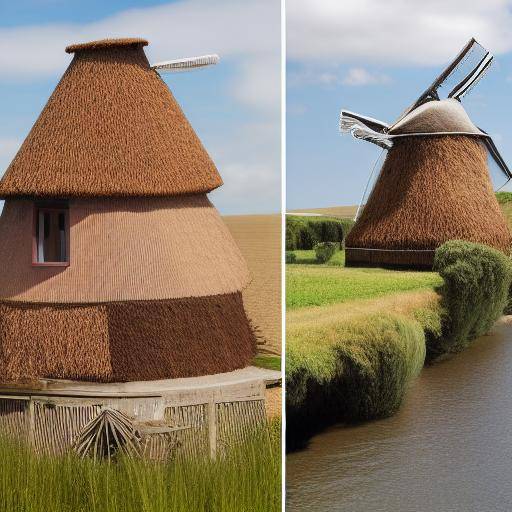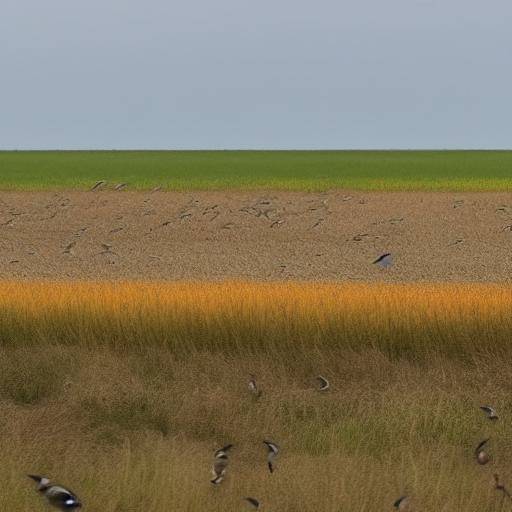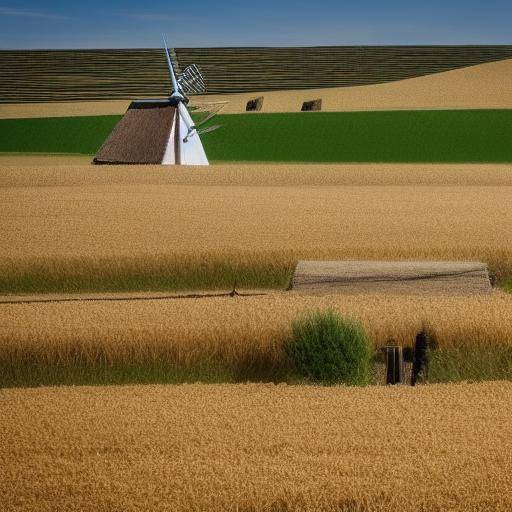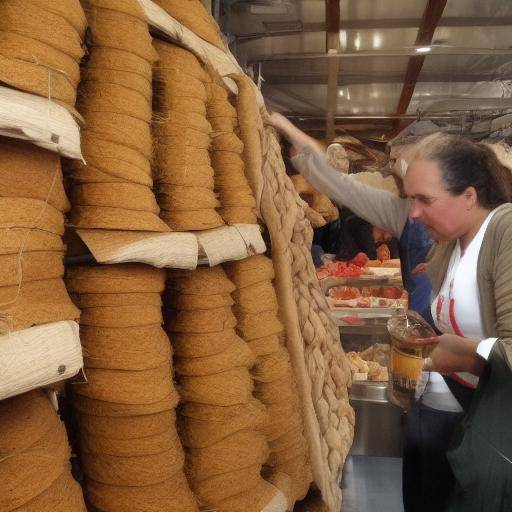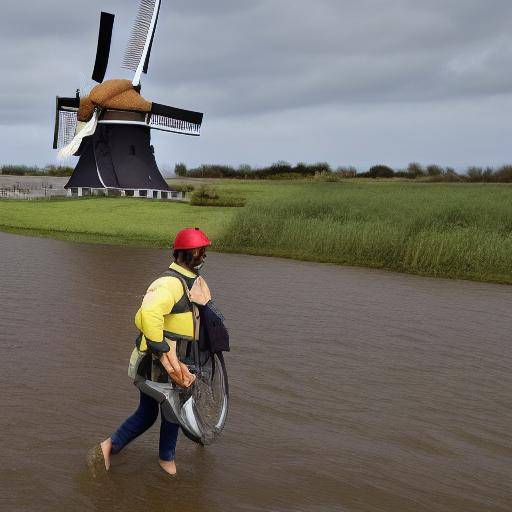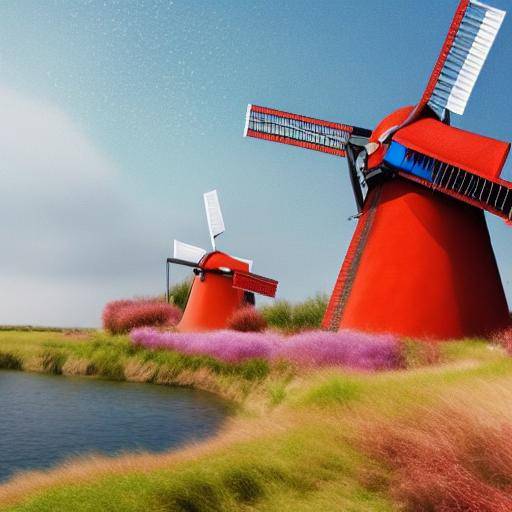
Introduction
Holland, known for its tulip fields and iconic windmills, has been a source of inspiration for artists from around the world. From Vincent van Gogh's famous paintings to contemporary paintings, Holland's landscape art has captured the imagination of generations. In this article, we will explore the rich history of windmills in the Netherlands, their influence on landscape art and the artistic experiences that have emerged from this picturesque scenario.
History and Background
The windmills, emblematic symbols of the Netherlands, have a history that dates back to several centuries. During the Dutch Golden Age, windmills were used to drain land and grind grains, and soon became a distinctive feature of the Dutch landscape. Over the years, these wooden giants have inspired artists to capture their majesty in canvases and artworks.
Origins and EvolutionIn the 13th century, windmills began to proliferate in Holland, playing a crucial role in the agricultural and economic development of the region. These iconic structures became symbols of Dutch engineering and its fight against water.
Impact on Landscape ArtThe Dutch painters of the Golden Age, like Jacob van Ruisdael, mastered the windmills in their landscapes, infusing life and emotion through their brushstrokes. This time marked the beginning of the artistic representation of windmills, which was perpetuated in the history of art.
Important DevelopmentsOver time, landscape art in the Netherlands diversified, incorporating new techniques and styles. Windmills continued to be an inexhaustible source of inspiration for artists, both local and international, who sought to translate the beauty of these monuments into their works.
Detailed Analysis
Artistic benefits
Windmills and Dutch landscapes offer artists a wide range of visual elements to creatively exploit. The amalgam of changing skies, vast tracts of land and the imposing structure of mills provides a perfect canvas for landscape art.
Creative Challenges
Despite its greatness, capturing the essence of windmills on canvas can present unique challenges for artists. The faithful representation of the light, texture and atmosphere of these landscapes requires skill and artistic sensitivity.
Current trends
At present, the landscape art that incorporates the Dutch windmills remains relevant and appreciated in the global artistic community. From traditional techniques to more avant-garde expressions, artists continue to explore and reinterpret these iconic landscapes.
Exhaustive examination
Artistic applications
Landscape art inspired by windmills is not limited only to painting. Photographers, sculptors and digital artists also find in these monuments an inexhaustible source of creativity for their works.
Best Practices
Artists who wish to capture the essence of the Dutch windmills in their works can benefit from studying the work of teachers who have masterfully translated these landscapes into their creations.
Comparative analysis
Windmills vs. Landscape art
The windmills, with their imposing presence, offer a fascinating contrast to the Dutch landscapes, giving artists a unique visual and emotional wealth to explore in their works.
Holland: Artistic Epicentre
Holland's own history and culture have significantly influenced landscape art, providing a culturally and emotionally rich context for the representation of windmills in art.
Practical Tips and Accessible Tips
- Capture the Changing Light: Experience with different moments of the day to capture how light transforms the landscape with windmills.
- Explore Symbolism: Take advantage of the intrinsic symbolism of windmills to convey visual metaphors in your works.
- Incorporate Originality: Do not be afraid to experiment with new perspectives and creative approaches to represent windmills in a unique way.
Industry Perspectives and Expert Reviews
The renowned Dutch landscape painter, Jan van der Kooi, highlights the importance of emotional authenticity by capturing windmills: "It is fundamental to connect with the spiritual essence of these monuments to convey their true impact on art."
Case Studies and Real Life Applications
"Vientos de Cambio" by María Pérez
The Spanish artist María Pérez travelled to the Netherlands to capture the essence of windmills in her series of paintings entitled "Vientos de Cambio", which has received praise for her vivid and emotional representation of these emblematic landscapes.
Art Work Restoration: "The Mill and the Aurora"
The process of restoring the iconic work of Guillermo del Toro, "El Molino y la Aurora", provides a fascinating insight into the historical and emotional link between art and windmills in Dutch culture.
Future Trends and Predictions
As landscape art continues to evolve, Dutch windmills are expected to remain an inexhaustible source of inspiration for artists from around the world. With technological advances and innovative approaches, the future of landscape art in relation to these monuments promises to continue to surprise and captivate audiences.
Conclusion
The Dutch windmills have transcended their original function to become eternal symbols of beauty, resistance and artistic creativity. Throughout history, these monuments have inspired generations of artists to translate their grandeur into canvases, photographs and artworks of all forms. Its impact on landscape art has no parangon, and its influence will endure as a testament to the beauty and inspiring power of nature.
Frequently asked questions
What is the historical importance of windmills in Holland?
The windmills played a vital role in Holland's history, helping to drain land and grind grains, and serving as symbols of the fight against water. His presence has left an indelible mark on the Dutch landscape and culture.
How have the windmills influenced contemporary artists?
Windmills have inspired a variety of contemporary art forms, from traditional painting to photography and digital art. His iconic presence and symbolism have resonated deeply in the global artistic community.
What challenges do artists face when representing windmills in their works?
Capturing the essence and majesty of windmills in art can present unique challenges, such as representing the changing light

